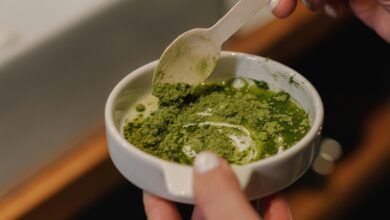How to Use Holistic Practices for Chronic Pain Management

Chronic pain is a complex and often debilitating condition that affects millions of people worldwide. Unlike acute pain, which serves as a warning signal for injury or illness, chronic pain persists long after the initial cause has healed, significantly impacting quality of life. While conventional treatments like medication and surgery can provide relief, many individuals are turning to holistic practices as complementary or alternative approaches to manage their pain. These practices focus on treating the whole person—mind, body, and spirit—rather than just addressing symptoms. In this article, we explore how holistic practices can be effectively integrated into chronic pain management.
1. Mindfulness Meditation: Cultivating Awareness and Reducing Stress
Mindfulness meditation is a powerful tool for managing chronic pain by helping individuals develop a non-judgmental awareness of their thoughts, emotions, and physical sensations.
How It Works
- Pain Perception : Chronic pain often amplifies due to stress, anxiety, and negative thought patterns. Mindfulness meditation helps reframe the relationship with pain, reducing its emotional impact.
- Neuroplasticity : Regular practice can alter brain structures associated with pain processing, leading to decreased sensitivity over time.
Practical Tips
- Start with guided meditations using apps like Headspace or Calm.
- Practice deep breathing exercises to calm the nervous system.
- Dedicate 10–20 minutes daily to mindfulness sessions, gradually increasing duration.
Benefits
- Reduces stress and inflammation.
- Improves emotional resilience and coping mechanisms.
- Enhances overall well-being.
2. Yoga: Combining Movement, Breath, and Relaxation
Yoga is an ancient practice that combines physical postures, breathing techniques, and meditation to promote healing and balance.
Why Yoga Helps
- Gentle Movement : Yoga improves flexibility, strength, and circulation, alleviating stiffness and tension caused by chronic pain.
- Breath Control : Pranayama (breathing exercises) activates the parasympathetic nervous system, promoting relaxation.
- Mind-Body Connection : Yoga fosters self-awareness, helping individuals listen to their bodies and avoid overexertion.
Types of Yoga for Chronic Pain
- Restorative Yoga : Focuses on gentle poses supported by props to encourage deep relaxation.
- Hatha Yoga : Emphasizes slow, controlled movements suitable for beginners.
- Yin Yoga : Targets connective tissues through long-held stretches, ideal for joint pain.
Precautions
Consult a qualified instructor familiar with chronic pain conditions to ensure safe practice.
3. Acupuncture: Restoring Energy Flow
Acupuncture, a cornerstone of Traditional Chinese Medicine (TCM), involves inserting thin needles into specific points on the body to restore energy flow (Qi) and alleviate pain.
Mechanism of Action
- Stimulates the release of endorphins, the body’s natural painkillers.
- Reduces inflammation and improves blood circulation.
- Balances the nervous system, promoting relaxation and healing.
Conditions Treated
- Back pain
- Migraines
- Arthritis
- Fibromyalgia
What to Expect
Sessions typically last 30–60 minutes. Multiple treatments may be required for sustained results.
4. Nutrition: Fueling the Body for Healing
Diet plays a crucial role in managing chronic pain by reducing inflammation, supporting tissue repair, and maintaining overall health.
Anti-Inflammatory Foods
- Fruits and Vegetables : Rich in antioxidants, they combat oxidative stress linked to chronic pain.
- Omega-3 Fatty Acids : Found in fish, flaxseeds, and walnuts, these reduce inflammation.
- Turmeric and Ginger : Contain compounds that have potent anti-inflammatory properties.
Foods to Avoid
- Processed foods high in sugar and trans fats, which exacerbate inflammation.
- Alcohol and caffeine, which can interfere with sleep and increase stress.
Supplements
Consider adding supplements like magnesium, vitamin D, and omega-3s under medical supervision.
5. Herbal Remedies: Natural Pain Relief
Herbal remedies offer gentle yet effective options for managing chronic pain without the side effects associated with pharmaceuticals.
Common Herbs
- Willow Bark : Contains salicin, a compound similar to aspirin, effective for mild to moderate pain.
- Boswellia : Known for its anti-inflammatory properties, useful for arthritis and joint pain.
- CBD Oil : Derived from cannabis, it reduces pain and inflammation while promoting relaxation.
Safety Considerations
Always consult a healthcare provider before using herbal remedies, especially if taking other medications.
6. Physical Therapy: Strengthening and Realigning the Body
Physical therapy focuses on improving mobility, strength, and function through targeted exercises and manual techniques.
Techniques Used
- Manual Therapy : Hands-on methods to relieve muscle tension and improve joint mobility.
- Therapeutic Exercises : Tailored routines to strengthen weak muscles and correct imbalances.
- Heat/Cold Therapy : Reduces swelling and soothes sore muscles.
Customized Plans
A licensed physical therapist will design a program based on your specific condition and goals.
7. Massage Therapy: Easing Muscle Tension
Massage therapy addresses chronic pain by releasing tight muscles, improving circulation, and reducing stress.
Types of Massage
- Swedish Massage : Promotes relaxation and relieves general tension.
- Deep Tissue Massage : Targets deeper layers of muscle and fascia for persistent pain.
- Trigger Point Therapy : Focuses on specific areas of tension to alleviate referred pain.
Frequency
Regular sessions, combined with at-home self-massage tools like foam rollers, enhance benefits.
8. Energy Healing: Balancing the Body’s Energies
Energy healing modalities aim to restore harmony within the body’s energetic systems, addressing the root causes of pain.
Popular Techniques
- Reiki : A Japanese technique involving light touch or no-touch methods to channel healing energy.
- Chakra Balancing : Aligns the body’s energy centers to promote physical and emotional well-being.
- Healing Touch : Uses hand placements to clear blockages and stimulate healing.
Scientific Perspective
While evidence is mixed, many users report reduced pain and improved mental clarity after energy healing sessions.
9. Cognitive Behavioral Therapy (CBT): Rewiring Thought Patterns
CBT is a psychological approach that helps individuals identify and change negative thought patterns contributing to chronic pain.
How It Helps
- Teaches coping strategies to manage pain-related anxiety and depression.
- Encourages positive behavioral changes, such as increased activity levels.
- Breaks the cycle of catastrophizing, where pain is perceived as worse than it actually is.
Implementation
Work with a licensed therapist to develop personalized CBT techniques.
10. Sleep Hygiene: Prioritizing Restorative Rest
Poor sleep exacerbates chronic pain, creating a vicious cycle. Establishing good sleep hygiene is essential for effective pain management.
Tips for Better Sleep
- Maintain a consistent sleep schedule.
- Create a calming bedtime routine, such as reading or meditating.
- Limit screen time before bed to reduce blue light exposure.
Supportive Practices
Incorporate relaxation techniques like progressive muscle relaxation or aromatherapy to prepare for restful sleep.




